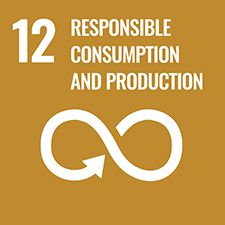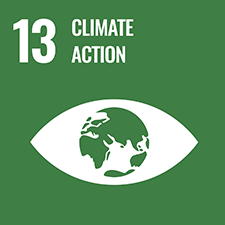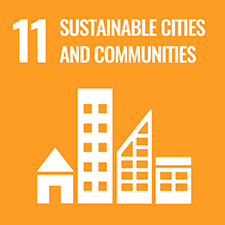
The Basics of B2B #4 - The 4P Total Marketing Strategy for Businesses
20 Apr, 2021
This is the 4th article in the series of articles titled The Basics of B2B by Brands Vietnam, cooperated with Dr. Dinh Tien Minh, Head of Marketing subject, School of International Business - Marketing, University of Economics Ho Chi Minh. The content of the article revolves around the basic knowledge of the B2B world. From there, readers can have their conclusions when they want to venture into a large and prosperous job market - B2B Marketing.
To achieve sales/market share goals or any other business goal, marketers in a B2B business also need to flexibly coordinate all four strategies Product, Price, Place and Promotion. In this article, Mr. Minh will share activities in setting price and pricing policy, organizing sales activities, and designing promotional communication programs.
* First, can you share through the Marketing Mix that B2B businesses are applying?
As shared in the previous post, the Marketing Mix tools that B2B businesses are applying cover four groups of strategies: Product, Price, Place and Promotion. In addition, Personal Selling in B2B Marketing is also quite important, so it is separated into a strategy, although it is often seen as a part of communication promotion. To achieve optimal efficiency, all of the above strategies need to be designed consistently and complement each other through brand positioning.
A simple example is when businesses define services as the criteria that customers expect, the marketer must add additional services in product-oriented development. Or when customers care much about costs, businesses must develop a flexible pricing policy, such as discounting and bonuses based on sales, solving the problem of minimizing costs for them so that both sides can enjoy the benefits. Regarding distribution (Place), marketers need to design sales intermediaries/systems towards convenience in transactions, helping customers find and buy products in the shortest time. Finally, advertising communications activities and salespeople must know how to convey outstanding features/characteristics of the brand positioning that the business is pursuing, helping them to plug deeply into the mind of the targeted audience.
* The previous article discussed product groups on the B2B market. Can you share more about the price strategy (Price)?
For the price strategy in a business, marketers are usually in charge of two main tasks: The first one is Setting a price and then setting a Pricing policy to deploy in the sales process and negotiation.
In theory and reality, first of all, businesses must always set the prices based on costs by calculating the total manufacturing cost and then adding the desired profit to get the selling price. This is the most basic and straightforward method, ignoring the factors of market demand and competitive situation. Therefore, many marketers often use a combination of some other methods such as comparing prices with their direct competitors, thereby adjusting their own prices to increase sales. In general, determining the optimal price requires a combination of methods that ultimately must meet the following three factors: It's worth the costs that the business spent (Company); Suitable with the competitive and market situation (Competitor); Finally, the Customer must accept the price (Customer). I call this the 3C model.
The result of the above process is that the business will set a specific price, but the spirit of the seller is: Never say no to the customer. To do that, marketers need to set up a pricing policy that is flexible enough to both pamper the wishes of the guests while not harming the interests of the business and competing with their competitors.
For example, if a company charges a product for 100 VND, the salesperson can recommend this standard price when he/she meets the customer. But then in the negotiation process, that employee will need to be empowered to negotiate and decide so that both sides feel beneficial. This is the time when marketers need to have a flexible pricing policy. As in the case where the company allows a discount of up to 15%, the seller can first propose a 10% discount to attract customer interest. But if they still want a higher discount, the seller can offer to increase the order value or shorten the payment term to increase the discount to 15%. It is easy to see that a smart salesperson equipped with a flexible enough price policy can help businesses win over customers' buying decisions. My advice is: “Never give the client all you have but give it slowly, you will get more than just once during the negotiation process. It can be seen as an essential soft skill in sales negotiation”.
* Besides the flexible pricing policy, what should businesses keep in mind when organizing a sales team?
For B2B or B2C businesses sales staff always play a crucial role in taking care of distribution channels/agencies and customers. To optimize costs, marketers need to calculate the productivity and the size of this team.

Marketers need to calculate the productivity and the size of the sales team.
First of all, the business needs to determine the number and types of customers to serve, for example, hospitals or pharmacies for pharmaceutical companies. Then, based on average productivity, like with eight hours a day how many agencies an employee can commute and visit, the marketer can estimate the size of the sales team they need. And finally, the business will allocate/organize work for this force, one group will be in charge of the pharmacy channel, and another group will be in charge of the hospital channel. This way will ensure all customers are visited; then we will assign additional KPIs to this team during the task implementation such as sales, revenues, number of orders, order value.
* There is a view that communication activities of B2B businesses are often limited. Do you agree with this point of view?
Communication activities in B2B businesses also cover various major jobs such as Advertising, Promotion, Direct Selling, Direct Marketing and Public Relations... hey all need to coordinate flexibly with each other to accomplish the company's goals.
On entering the market, marketers can advertise so that customers know the existence of the businesses and their products. But that doesn't mean they will buy because they do not understand the benefits of the solution that the company brings or are still technically ambiguous. That's why marketers need to organize more seminars and invite customers to come to share.
However, understanding is not synonymously with their believing and buying; businesses need to let them try, experience or refer to their past projects combined with marketing activities to stimulate their buying decisions. And finally, to encourage customers to continue using the company's products, businesses can offer loyalty programs or good customer care. Having a relationship is more manageable than keeping one for future business opportunities.
To sum up, B2B businesses also need to coordinate many different communication tools to transform customer states: From ignorance, knowing to understand, then trusting and buying, finally maintaining their loyalty (know - understand - trust- buy - buy more).
* It is known that the buying process of a business is influenced by many different sides. ho should a communication strategy target?
This depends on the company's goals for communication activities.
In the event of a new product just being launched and the company needs to increase awareness as broadly as possible, marketers can buy advertising positions in specialized magazines or participate in specialized exhibitions, then we do not intentionally target any particular subjects. But if you want customers to understand the product, marketers will need to organize workshops and be able to invite technical staff in the client's business, who act as an influencer to influence the buying process as having mentioned in the previous article.
So, depending on the goal, we need to identify the right audience and design the right communication program to help increase sales and market share for the company ultimately.
* What else do you want to say to those who are following this forum?
Up to this point, I have shared content that well combines theory with my practical experience. With the desire to dig deeper and open up a close-up view of B2B Marketing work in the market, in the next articles, I will discuss with you who work in some B2B fields such as foreign exchange services in the bank, organic fertilizer and plasticized plastic products.
Hopefully, readers will have a clearer view of the job market out there, no longer encapsulate their thoughts in B2B industries. There are many products and businesses that we have little exposure to, but that does not mean those job opportunities there are not wide open.
* Thank you for your sharing.
Source: Brands Vietnam




![[Research Contribution] Factors Affecting Gen Z's Intention To Buy Green Cosmetics Through The Intermediate Variable Of Consumers' Attitude](/images/upload/thumbnail/ueh-thumbnail-639018655243295179.png)








